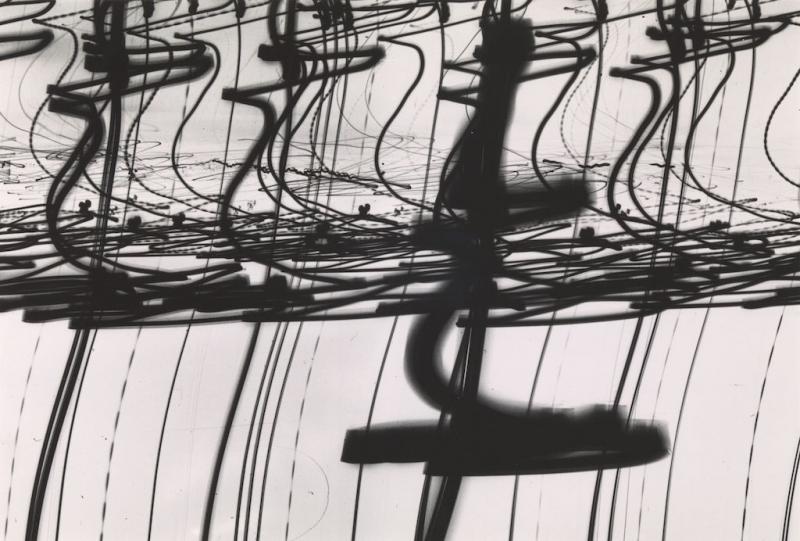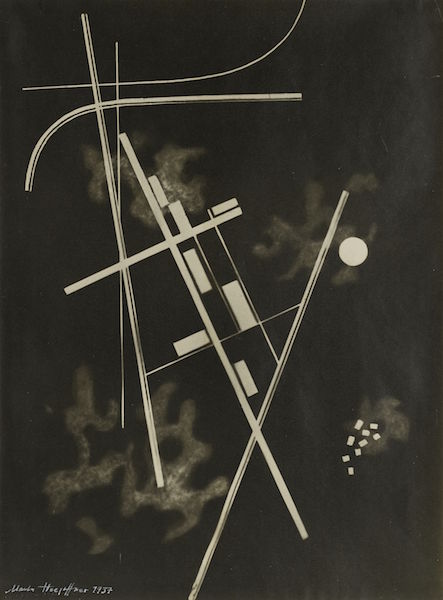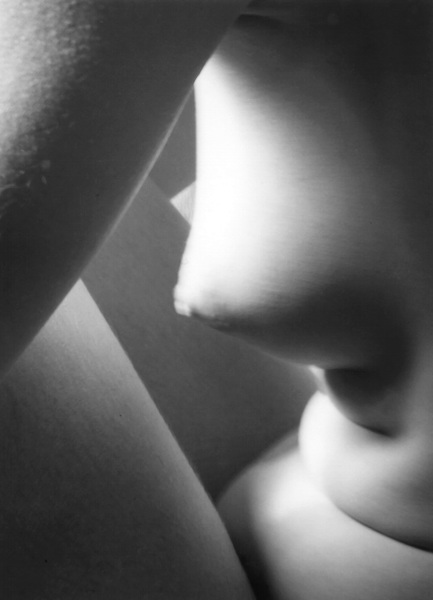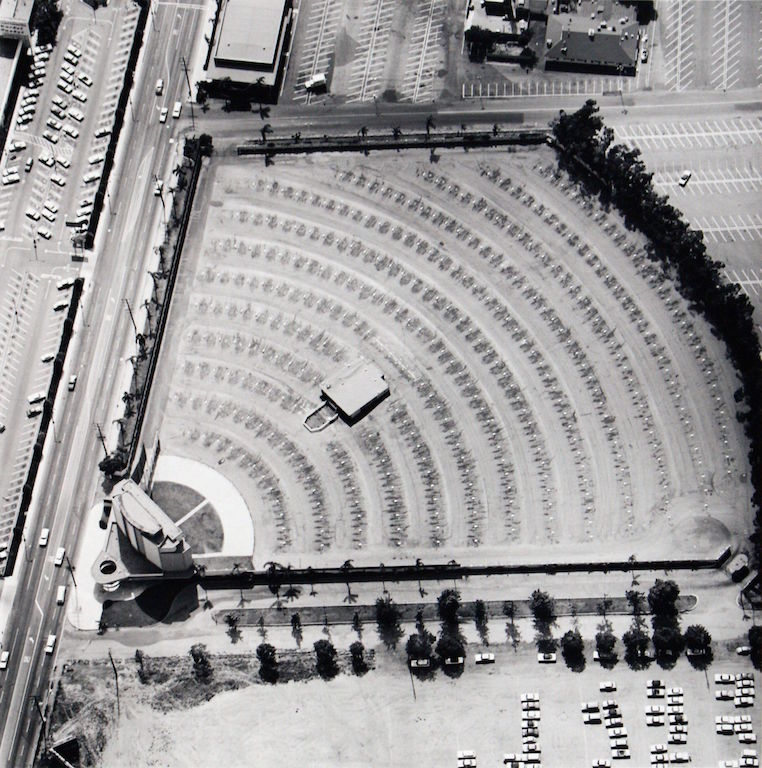Shape of Light, Tate Modern review - a wasted opportunity | reviews, news & interviews
Shape of Light, Tate Modern review - a wasted opportunity
Shape of Light, Tate Modern review - a wasted opportunity
The relationship between art and photography reduced to commonplaces

"From today painting is dead" was the pessimistic outcry of Paul Delaroche on first seeing a photograph. Ever since its inception, photography has had a vexed but fruitful relationship with painting.
Shape of Light: 100 Years of Photography and Abstract Art sets out to show how photography and abstract art have a shared history. Juxtaposing photographs from across the world with paintings that supposedly explore similar themes, the exhibition takes you on a whistle stop tour of the 20th and 21st centuries. If the goal is to emphasise the importance of photography as a fine art and reveal the influence it has had on painters and sculptors, it fails.
 We still tend to value paintings more highly than photographs, so if you hang one beside another the likely assumption is that the photograph emulates the painting. This idea is reinforced in the first room where Swinging, 1925, an abstract painting by Wassily Kandinsky, is juxtaposed with Homage to Kandinsky, 1937, by Marta Hoepffner (pictured right); she emulates Kandinsky's subtle geometry by placing stencils on photographic paper and exposing them to light.
We still tend to value paintings more highly than photographs, so if you hang one beside another the likely assumption is that the photograph emulates the painting. This idea is reinforced in the first room where Swinging, 1925, an abstract painting by Wassily Kandinsky, is juxtaposed with Homage to Kandinsky, 1937, by Marta Hoepffner (pictured right); she emulates Kandinsky's subtle geometry by placing stencils on photographic paper and exposing them to light.
This example of direct influence sets the tone for the whole show, encouraging one to see all the subsequent photos as monochrome equivalents of paintings. The actual story is far richer and more interesting, though. Had they juxtaposed one of Kasimir Malevich's Suprematist compositions with the aerial shots of landscape that inspired them, it would have revealed a two-way exchange of ideas. They could have quoted another avant guarde Russian artist, Alexander Rodchenko who wrote that “in order to educate man ... everyday familiar objects must be shown with totally unexpected perspectives and in unexpected situations.” The dynamism of his photographs comes from the unusual viewpoints he used to change our perceptions of the world.
On show are four of his photographs, including a superb shot from 1929 of the metal struts of a radio tower spiralling up towards infinity. They should have dedicated a whole room to him, to show how photography, photomontage and collage were an integral part of his output as a painter and designer. Photography was not, he insisted, an adjunct to fine art, but “has every right and every merit to claim our attention as the art of our age.”
 The Hungarian artist, Lazlo Moholy-Nagy is given more space, but is represented only by photographs and a painting, which is to miss the whole point of his work and that of other mutimedia artists from the 1920s onwards. He and Rodchenko challenged the supremacy of painting by refusing to see any medium as more important than another and by working in fields as diverse as film, graphic and theatre design, sculpture, painting and light shows.
The Hungarian artist, Lazlo Moholy-Nagy is given more space, but is represented only by photographs and a painting, which is to miss the whole point of his work and that of other mutimedia artists from the 1920s onwards. He and Rodchenko challenged the supremacy of painting by refusing to see any medium as more important than another and by working in fields as diverse as film, graphic and theatre design, sculpture, painting and light shows.
In any case, it would have been better to select one photographer to represent each tendency or trend and show their work in depth, rather than include numerous artists with one or two pictures each. The labelling is so poor that it is virtually impossible to figure out who took which photographs. The only thing one learns from the rows and banks of images (pictured below: installation shot by Seraphina Neville) is that, at any one time, a lot of people in different parts of the world were taking similar shots – whether of carpet threads and vinyl grooves, stacks of wood, paper or pipes, distorted and abstracted nudes (pictured above left: Triangles 1928, by Imogen Cunningham), crumbling walls and peeling paintwork or patterns of light and dark, both found and created.
On the other hand, I was delighted to be introduced to the work of Bela Kolarova, a Czech photographer I’d never heard of who, in the 1960s and ‘70s, made photograms with shells and bottle tops and whose wizardry with stencils in the dark room led to exquisitely subtle arrangements of lines, textures and repeating patterns.
 Nor did I know that American painter, Ellsworth Kelly took photographs that replicate the spatial ambiguities he explores in his shaped canvases. On show are photographs from the 1970s of a road marking resembling a shaft of divine light, a cinema screen tilted to become a rhomboid and a tree casting its shadow across the pavement and nearby wall. These wonderful examples of life copying art are lost on one, though, without one of Kelly's paintings for comparison.
Nor did I know that American painter, Ellsworth Kelly took photographs that replicate the spatial ambiguities he explores in his shaped canvases. On show are photographs from the 1970s of a road marking resembling a shaft of divine light, a cinema screen tilted to become a rhomboid and a tree casting its shadow across the pavement and nearby wall. These wonderful examples of life copying art are lost on one, though, without one of Kelly's paintings for comparison.
Ed Ruscha obsessively catalogues the world around him in photographs of palm trees, gas stations and the empty parking lots on show; seen from above, the herring bone patterns that mark the different bays create delicate traceries across the tarmac (pictured above right: Gilmore Drive-in Theater - 6201 W. Third St.1967). They are coupled with a Carl Andre floor sculpture, a link that makes little sense except that both form grids. Why not show one of Ruscha's pared-down paintings of buildings and signs, or establish an intelligent dialogue between photography and sculpture by including sculptors like Richard Long and Hamish Fulton in whose work photography plays a vital role? They were part of an explosion of multimedia work that erupted in the 1970s and continues to flourish to such an extent that many art schools have abanonded traditional categories in favour of multimedia departments. But there's scarcely a whiff of this interplay in the show, which still encourages one to think of photography, painting and sculpture as separate disciplines.  Even on its own terms the exhibition doesn't work. Many wonderful pictures are included, but by bundling them together under arbitrary titles such as Finding Form, Drawing with Light (main picture: Luminogram II, 1952, by Otto Steinert) and Subjectivity and Expression, the show reduces the work to a common denominator and, thereby, robs it of context, meaning and poetry while offering precious little illumination concerning the fruitful dialogue between abstract painting and photography that has lasted a hundred years and is set to continue.
Even on its own terms the exhibition doesn't work. Many wonderful pictures are included, but by bundling them together under arbitrary titles such as Finding Form, Drawing with Light (main picture: Luminogram II, 1952, by Otto Steinert) and Subjectivity and Expression, the show reduces the work to a common denominator and, thereby, robs it of context, meaning and poetry while offering precious little illumination concerning the fruitful dialogue between abstract painting and photography that has lasted a hundred years and is set to continue.
rating
Explore topics
Share this article
The future of Arts Journalism
You can stop theartsdesk.com closing!
We urgently need financing to survive. Our fundraising drive has thus far raised £49,000 but we need to reach £100,000 or we will be forced to close. Please contribute here: https://gofund.me/c3f6033d
And if you can forward this information to anyone who might assist, we’d be grateful.

Subscribe to theartsdesk.com
Thank you for continuing to read our work on theartsdesk.com. For unlimited access to every article in its entirety, including our archive of more than 15,000 pieces, we're asking for £5 per month or £40 per year. We feel it's a very good deal, and hope you do too.
To take a subscription now simply click here.
And if you're looking for that extra gift for a friend or family member, why not treat them to a theartsdesk.com gift subscription?
more Visual arts
 'We are bowled over!' Thank you for your messages of love and support
Much-appreciated words of commendation from readers and the cultural community
'We are bowled over!' Thank you for your messages of love and support
Much-appreciated words of commendation from readers and the cultural community
 Folkestone Triennial 2025 - landscape, seascape, art lovers' escape
Locally rooted festival brings home many but not all global concerns
Folkestone Triennial 2025 - landscape, seascape, art lovers' escape
Locally rooted festival brings home many but not all global concerns
 Sir Brian Clarke (1953-2025) - a personal tribute
Remembering an artist with a gift for the transcendent
Sir Brian Clarke (1953-2025) - a personal tribute
Remembering an artist with a gift for the transcendent
 Emily Kam Kngwarray, Tate Modern review - glimpses of another world
Pictures that are an affirmation of belonging
Emily Kam Kngwarray, Tate Modern review - glimpses of another world
Pictures that are an affirmation of belonging
 Kiefer / Van Gogh, Royal Academy review - a pairing of opposites
Small scale intensity meets large scale melodrama
Kiefer / Van Gogh, Royal Academy review - a pairing of opposites
Small scale intensity meets large scale melodrama
 Jenny Saville: The Anatomy of Painting, National Portrait Gallery review - a protégé losing her way
A brilliant painter in search of a worthwhile subject
Jenny Saville: The Anatomy of Painting, National Portrait Gallery review - a protégé losing her way
A brilliant painter in search of a worthwhile subject
 Abstract Erotic, Courtauld Gallery review - sculpture that is sensuous, funny and subversive
Testing the boundaries of good taste, and winning
Abstract Erotic, Courtauld Gallery review - sculpture that is sensuous, funny and subversive
Testing the boundaries of good taste, and winning
 Edward Burra, Tate Britain review - watercolour made mainstream
Social satire with a nasty bite
Edward Burra, Tate Britain review - watercolour made mainstream
Social satire with a nasty bite
 Ithell Colquhoun, Tate Britain review - revelations of a weird and wonderful world
Emanations from the unconscious
Ithell Colquhoun, Tate Britain review - revelations of a weird and wonderful world
Emanations from the unconscious
 Rachel Jones: Gated Canyons, Dulwich Picture Gallery review - teeth with a real bite
Mouths have never looked so good
Rachel Jones: Gated Canyons, Dulwich Picture Gallery review - teeth with a real bite
Mouths have never looked so good
 Yoshitomo Nara, Hayward Gallery review - sickeningly cute kids
How to make millions out of kitsch
Yoshitomo Nara, Hayward Gallery review - sickeningly cute kids
How to make millions out of kitsch
 Hamad Butt: Apprehensions, Whitechapel Gallery review - cool, calm and potentially lethal
The YBA who didn’t have time to become a household name
Hamad Butt: Apprehensions, Whitechapel Gallery review - cool, calm and potentially lethal
The YBA who didn’t have time to become a household name

Add comment